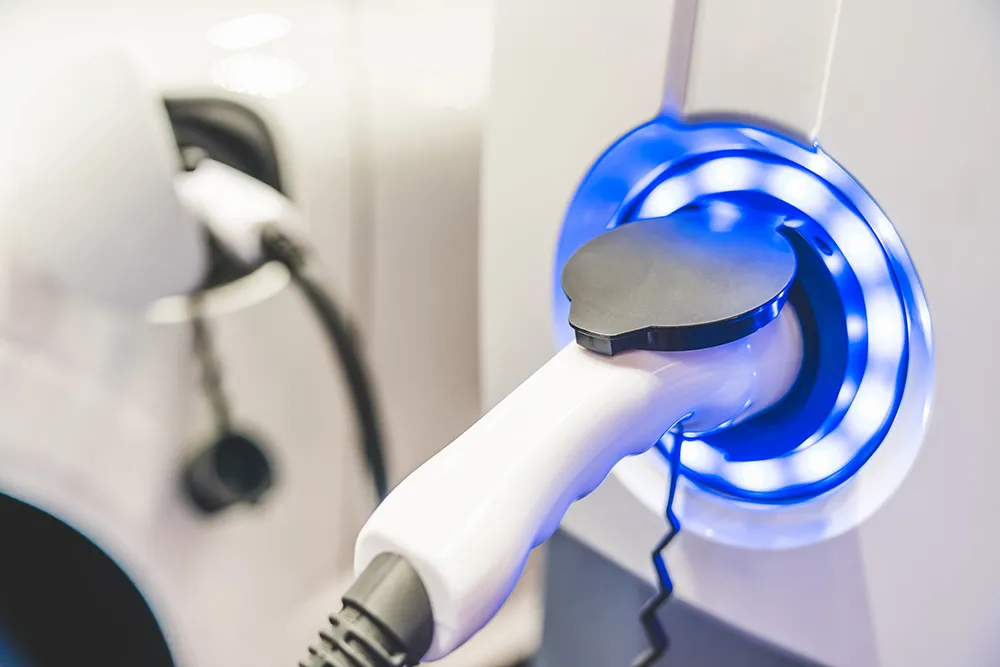New analysis from Frost and Sullivan, Strategic Technology and Market Analysis of Electric Vehicle Charging Infrastructure in Europe, finds that the market for electric (EV) charging stations is expected to grow rapidly from 7,250 charging stations in 2012 to over 3.1 million by 2019 at a compound annual growth rate (CAGR) of 113.3 per cent over the period 2012-2019. France, Germany, Norway and the United Kingdom are expected to lead the market due to the high adoption rates of EVs in these countries.
May 31, 2013
Read time: 3 mins
New analysis from Frost & Sullivan, Strategic Technology and Market Analysis of Electric Vehicle Charging Infrastructure in Europe, finds that the market for electric (EV) charging stations is expected to grow rapidly from 7,250 charging stations in 2012 to over 3.1 million by 2019 at a compound annual growth rate (CAGR) of 113.3 per cent over the period 2012-2019. France, Germany, Norway and the United Kingdom are expected to lead the market due to the high adoption rates of EVs in these countries.
The availability of charging infrastructure plays a vital role in ensuring that EVs maintain their growth momentum. This, in turn, means easy access to charging stations to eliminate range anxiety and ensure that EV users have the freedom to drive for longer periods of time.
“Frost and Sullivan research indicates that over 3.1 million charging stations are likely to be installed across Europe by 2019,” notes Frost and Sullivan automotive and transportation research associate Prajyot Sathe. “Mode 2 charging is expected to account for over 64 per cent of the market share as nearly 83 per cent of charging is expected to happen in residences or in a location where the vehicle will be parked for 8-10 hours daily.”
Mode 3 charging will be popular in public locations. However, DC charging will be installed in strategic locations where vehicles can be charged in less than 30 minutes. Inductive charging will also be popular, but is likely to be adopted only post- 2014.
Even as the market picks up steam, a major speed bump will be inability to provide long range in a single charge and charging times varying from thirty minutes to ten hours.
“Through continuous R&D, market participants are expected to introduce innovative solutions that address these issues,” says Sathe. “Emerging trends, for instance, are focusing on AC fast charging which will charge vehicles in two to three hours, representing the best use case in locations such as cinema halls and shopping malls.”
Apart from technical issues, another challenge relates to the as yet ambiguous roles of utility companies, original equipment manufacturers (OEMs), and charging infrastructure providers in the market. Moreover, multiple rules and regulations related to the electricity usage and charges across EU means that a standardised business model is yet to be adopted. Developing a dynamic business model will, therefore, be a key requirement if the market is to continue on its upward trajectory.
“Improving access through building of essential charging infrastructure in strategic public and private locations will overcome the challenge of range anxiety,” concludes Sathe. “Technology advancement that reduces charging time while improving reliability, safety and robustness of the electric charging system will encourage EV adoption.”
The availability of charging infrastructure plays a vital role in ensuring that EVs maintain their growth momentum. This, in turn, means easy access to charging stations to eliminate range anxiety and ensure that EV users have the freedom to drive for longer periods of time.
“Frost and Sullivan research indicates that over 3.1 million charging stations are likely to be installed across Europe by 2019,” notes Frost and Sullivan automotive and transportation research associate Prajyot Sathe. “Mode 2 charging is expected to account for over 64 per cent of the market share as nearly 83 per cent of charging is expected to happen in residences or in a location where the vehicle will be parked for 8-10 hours daily.”
Mode 3 charging will be popular in public locations. However, DC charging will be installed in strategic locations where vehicles can be charged in less than 30 minutes. Inductive charging will also be popular, but is likely to be adopted only post- 2014.
Even as the market picks up steam, a major speed bump will be inability to provide long range in a single charge and charging times varying from thirty minutes to ten hours.
“Through continuous R&D, market participants are expected to introduce innovative solutions that address these issues,” says Sathe. “Emerging trends, for instance, are focusing on AC fast charging which will charge vehicles in two to three hours, representing the best use case in locations such as cinema halls and shopping malls.”
Apart from technical issues, another challenge relates to the as yet ambiguous roles of utility companies, original equipment manufacturers (OEMs), and charging infrastructure providers in the market. Moreover, multiple rules and regulations related to the electricity usage and charges across EU means that a standardised business model is yet to be adopted. Developing a dynamic business model will, therefore, be a key requirement if the market is to continue on its upward trajectory.
“Improving access through building of essential charging infrastructure in strategic public and private locations will overcome the challenge of range anxiety,” concludes Sathe. “Technology advancement that reduces charging time while improving reliability, safety and robustness of the electric charging system will encourage EV adoption.”







